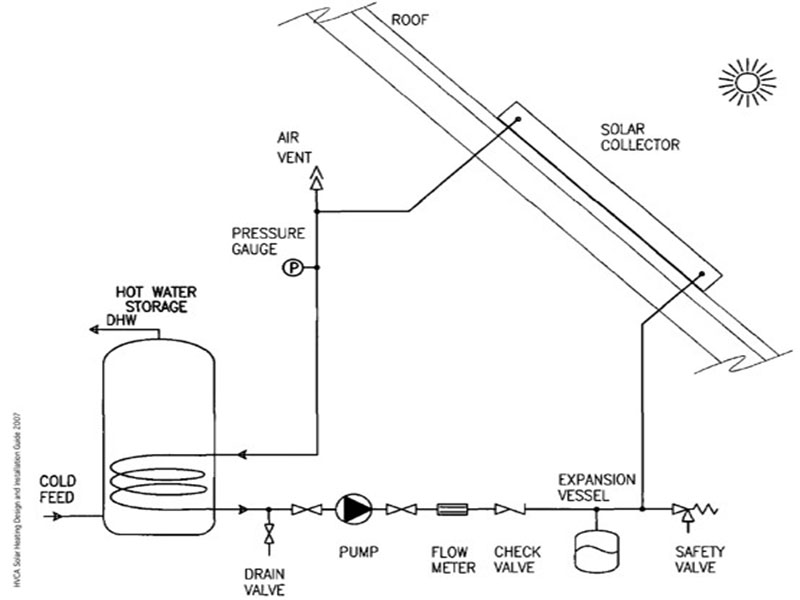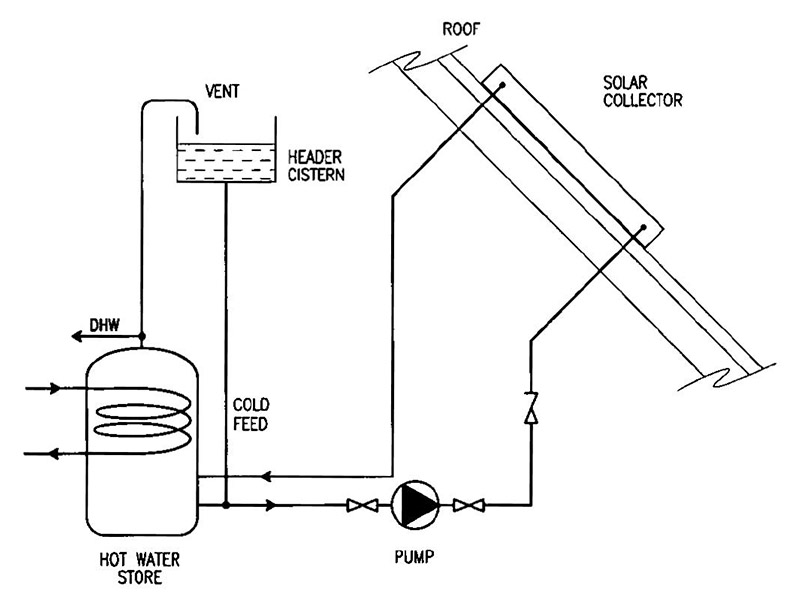Fully pumped systems
This is the dominant type of system that is used in residential property through to large commercial and industrial applications. They are generally designed so that the exposed components will not tolerate freezing liquids and so must circulate water including glycol antifreeze in a closed loop separated from the potable domestic hot water using a coil to exchange heat in the cylinder.

Image: A simple sealed solar thermal system.
Some systems are available using materials and pipework that can accept freezing water. These can use potable water in a direct system avoiding the need for a domestic hot water heat exchanger. Since the water is being continuously refreshed there may be some water treatment needed to prevent an accumulation of scale or solids.

Image: A direct solar system using potable water.
Temperature sensors compare the temperature in the collector and the store and if heat is available and needed the pump will switch on, typically when the bottom of the store is 6K - 10K cooler than the collector.
When heat is available, but the store is already at design temperature, there is a risk of stagnation. Some systems will have an additional circuit to reject this heat. Stagnation occurs when the solar system doesn't have anywhere to put the heat that is being collected from the sun. In such conditions flat plate systems can reach temperatures of over 170°C and evacuated tubes over 200°C. At these temperatures in indirect systems, the propylene glycol becomes more acidic and the effectiveness of the glycol to act as an antifreeze will degrade. Closed systems have to be designed to accommodate some boiling (and expansion) using an expansion vessel, or they will release fluid through the safety valve, which can be hazardous and cause a maintenance problem.
When it is expected that systems will be left unattended or unused during periods of high solar insolation appropriate provision for controlling the potentially damaging build-up of heat must be made.
The check valve prevents reverse gravity circulation cooling the water store. This could otherwise occur when the pump is not operating and the collector contains colder, more dense fluid as would be typical at night.
Any pumps in such systems are required by the Building Regulations to consume fewer than 50W, or less than 2% of the peak thermal power of collector, whichever is higher.
Remark:
Some of the articles are taken from the Internet. If there is any infringement, please contact us to delete it. If you’re interesting in heat pump products,please feel free to contact OSB heat pump. We are your best choice.

